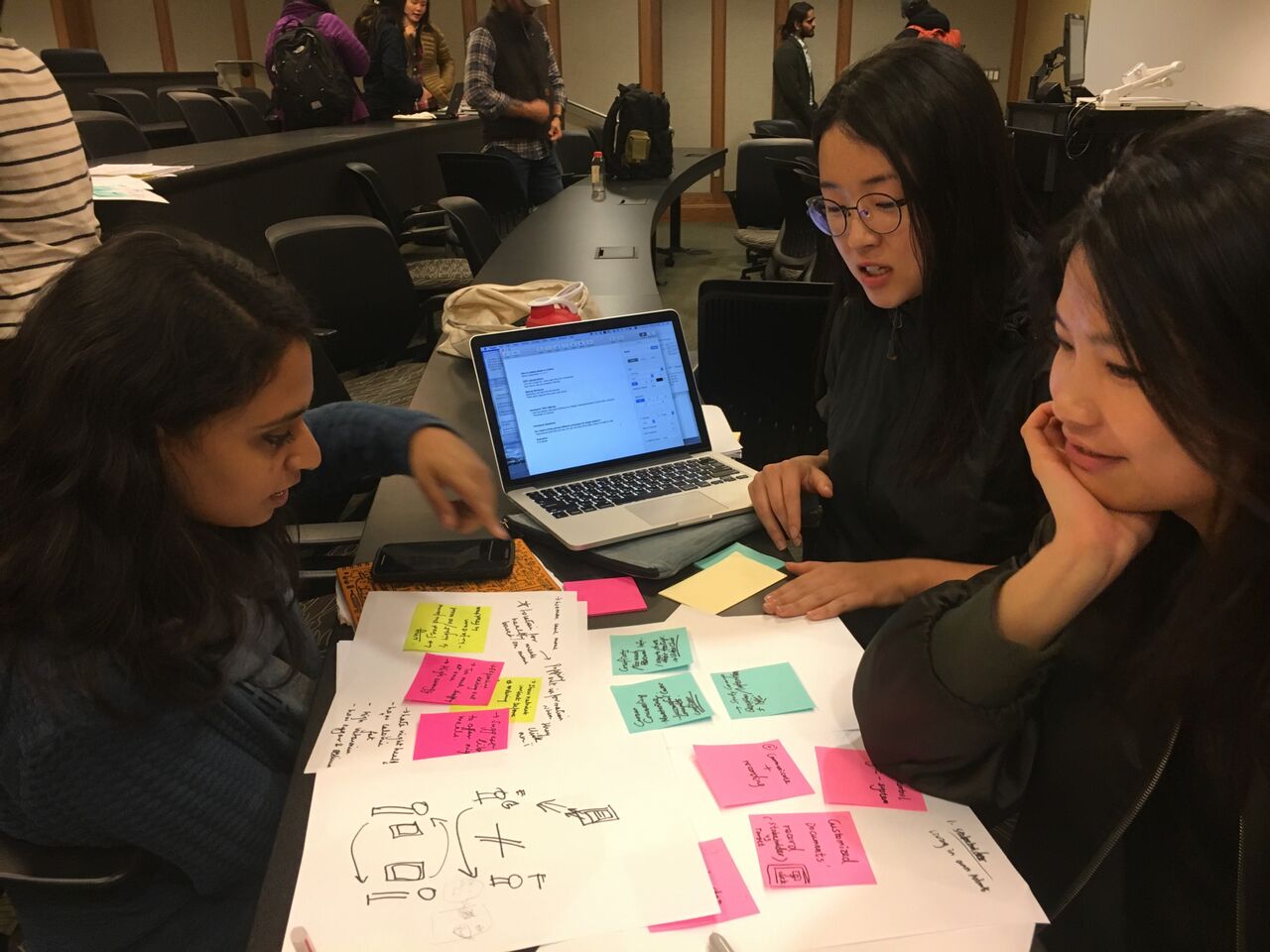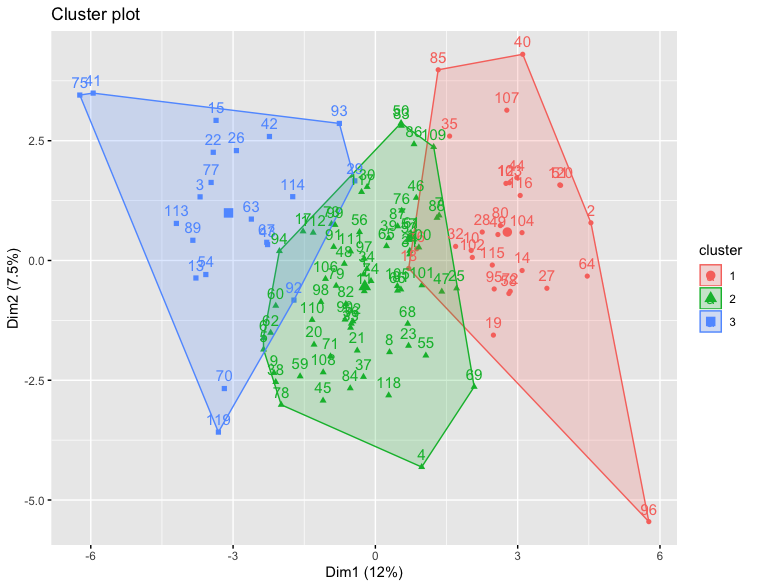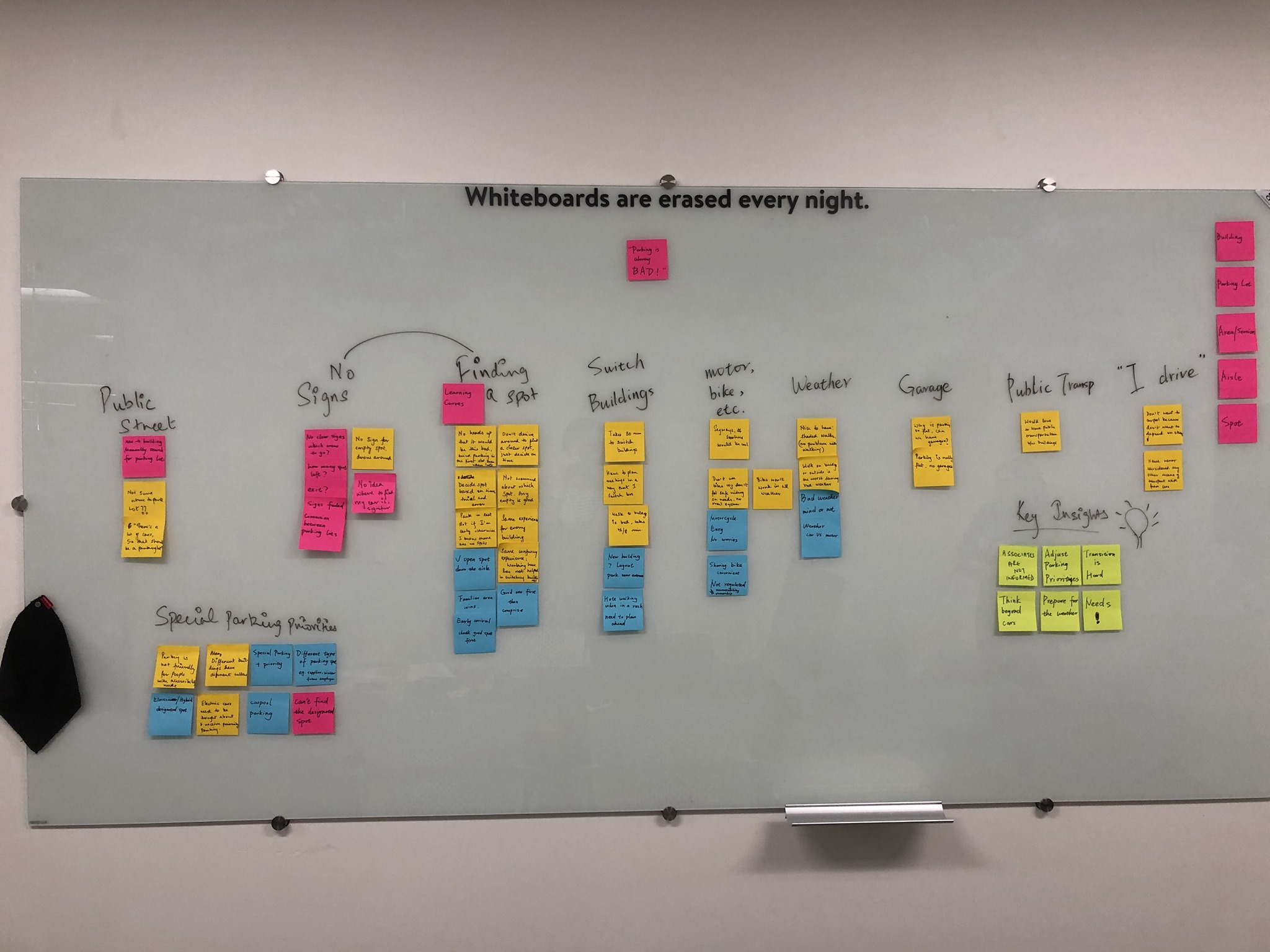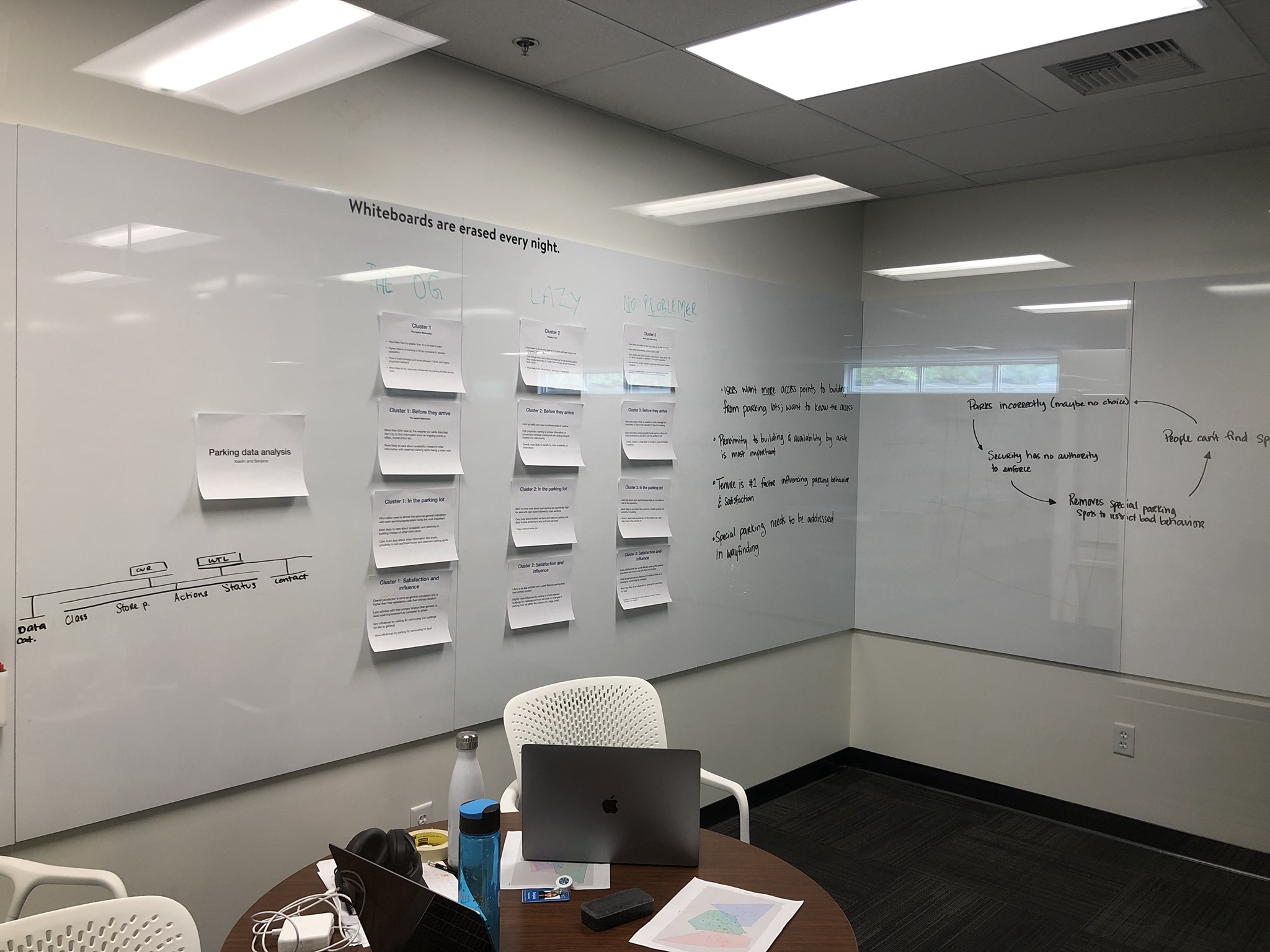ROLE AND TIMELINE:
Research Lead, May 2019 - July 2019
RESEARCH METHOD AND PARTICIPANTS:
Mixed-methods research, Segmentation analysis, Interviews, Field study
PRODUCT SQUAD PARTNERS:
Program manager, Product Manager, Tech Lead and UX Designer
SUMMARY:
Responsible for research scoping, planning, execution and analysis to determine parking needs and pain points and consequently test the resulting desgin concept for usefulness in employee experience.
As part of the new campus initiative, the product team was hoping to redesign the parking experience for Walmart associates in Bentonville to help them arrive at work without a hassle.
Walmart headquarters in Bentonville employs nearly 17,000 associates. This large influx of vehicle traffic in a compact city makes parking a challenge and to tackle this the product team wanted to use technology to help associates find parking easily. Different associates have different needs based on their capus, job function, personal schedule etc. The UX Research team was approached to help the product team understand parking needs and pain points for various groups of associates across different buildings.
RESEARCH QUESTIONS
- How can users be categorized based on their parking behavior?
What parameters affect their decisions while arriving for work/traveling in-and-out of campus?
What information do they need to access when before they arrive for work?
What parameters can we solve for that would benefit the largest proportion of associates?
OUTCOME 1: HYPOTHESES GENERATION
This study was especially challenging as there was limited time to create well developed personas across all 17,000 associates. On having further conversations with stakeholders, we aligned on segmenting associates based on their information need while arriving at work.
I decided to adopt a mixed-methods approach where I first conducted a quick round of in-depth interviews to generate my hypotheses for information needs. I interviewed 5 associates to gather initial patterns of behavior.
Insight: Based on interviews we were able to generate 8 data points for information needs spanning from availability of open spaces to promixity to bike lanes and food services.

*Image has been obfuscated to protect company property
OUTCOME 2: DATA PERSONA GENERATION
From the hypothesis of information needs, we designed a survey where employees were asked to elicit their preferences for information needs. Because needs were extremely different across employees, we mapped information needs across participant demographics, tenure, job function and current campus and job schedule. This enterprise-wide survey had over 300 responses across a wide variety of campuses, job functions, tenure etc.
Once data was collected, I conducted a segmentation analysis to develop data-backed personas based on survey responses. I ran multiple iterations of the code to validate the right amount of segments and eventually discovered 3 distinct segments.


Data from survey was tidied, quantified and scaled to conduct segmentation analysis
Output from clustering raw data into distinct segments
The "OG"
"I've been working at Walmart for nearly 10 years now. I have a fixed schedule and get here every morning at between 7:00 - 7:15am because well...I don't want to park 2 miles away. I'd rather park nearby than come in late to office. My day starts at 8 am so I use my quiet mornings to get some reading time before work.
The Hybrid
I roll into office anytime after 9-9:30am, I mostly take my morning meetings from home. I spend hours driving around to find nearby parking because everything is full by 7:30am. I don't mind walking though, I just need to know where can I find something open.
The Ace
I come here at a reasonable time, I'm not the one to rush for parking. I like borrowing a bike from the stands if I park too far. I try to plan my day as much as possible and always build parking into it. I wish we could have more shaded parking though, I always try to find one if I can.
* Above personas represent a highly aggregated version of the original data. All data included is placeholder only, and do not represent any true employee information.
TESTING OUR PROOF OF CONCEPT
From our personas, we identified 'The Hybrid' group as our primary target group as they had the highest information need when making parking decisions. Based on the persona data, the product team developed a working prototype that would inform users of open parking spots in a parking lot. Once the prototype was active, I designed a test plan for a field observation study and planned the logistics for the same. My key responsibilites included:
- Recruiting supporting research volunteers
- Developing the intervention script
- Designing and administering the feedback survey
- Communication plan for alerting potential participants
- Securing security and legal permissions to ensure employee safety while study is in progress.
- Securing budget for sustenance needs of research volunteers eg: water, lunch, security vests etc.
- Communication artifacts to be put up in campus parking lots for post-study feedback
From our field observations we learnt that giving information to associates for making parking decision significantly altered their day-day decisions such as traveling to other campuses for meetings and going out for lunch.
IMPACT AND KEY TAKEAWAYS
This research was extremely impactful in determining the strategic direction for feature investments related to associate parking experience. The team initially had reservations to secure business buy-in for parking technology but the data from research backed them up to present a compelling case to executives for their support.
As a result, they were able to secure budget for engineering effort required to develop and roll out the proof of concept to the target user group.


This project not only taught me how to scale research in a short timeframe but also gave me solid experience in planning logistics for conducting large scale field observation studies.
This was the first but not the last engagement with the campus product team hence it was very important to use this opportunity to build trust. I learnt how to adopt leverage the depth of qualitative methods and the pace of quantitative methods to generate insights in short period of time.
